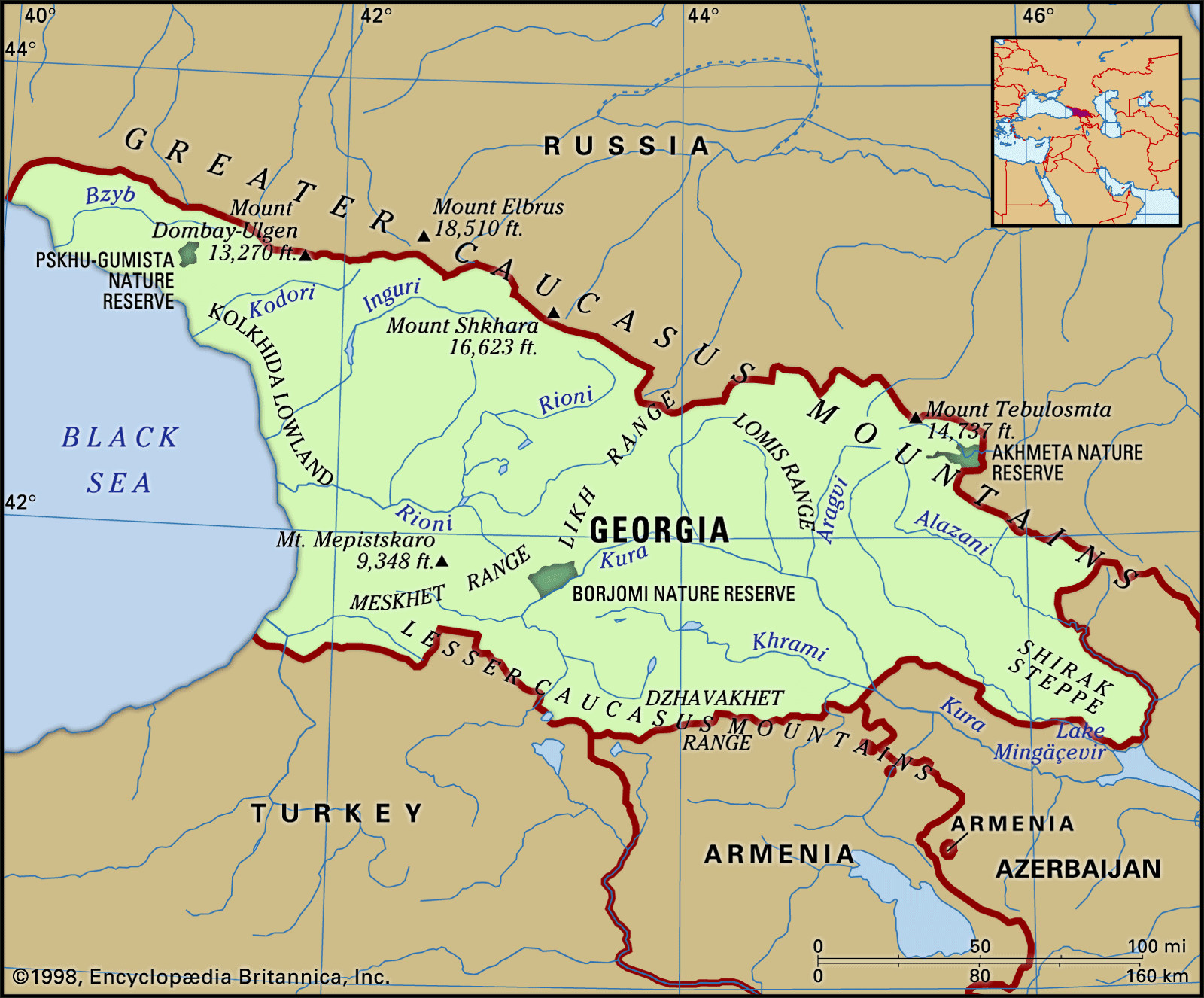Georgia, a country of captivating landscapes and rich history, often sparks curiosity about its geographical location. When asking “Where Is Georgia Eastern Europe?”, the answer is nuanced and fascinating, revealing a nation straddling continents and cultures. Nestled at the crossroads of Eastern Europe and Western Asia, Georgia’s unique position in the Caucasus region shapes its identity, climate, and biodiversity.
Exploring Georgia’s Diverse Terrain and Strategic Location
Georgia’s landscape is remarkably diverse, packed within a relatively small area. From the humid subtropical Black Sea coast to the towering, snow-capped peaks of the Greater Caucasus Mountains, the country presents a dramatic range of geographical features. This varied terrain plays a significant role in defining Georgia’s climate zones and rich ecosystems.
The country can be broadly divided into three east-west bands. The northernmost band is dominated by the imposing Greater Caucasus range. This mountain wall serves as a natural border and a defining feature of Georgia’s landscape. Within this range, you’ll find peaks like Mount Shkhara, Georgia’s highest point, and the majestic Mount Kazbek, an extinct volcano. These high-altitude regions are the source of numerous rivers and streams that carve through the mountains, creating spectacular gorges.
The Diverse Physical Terrain of Georgia in the Caucasus Region
South of the Greater Caucasus lies a central band characterized by lowlands and plateaus. The Kolkhida Lowland, bordering the Black Sea, is a fertile plain formed by centuries of river deposits. Major rivers like the Inguri, Rioni, and Kodori flow across this lowland, which was historically swampy but has been transformed into a vital agricultural region. Eastward, this structural trough is intersected by the Meskhet and Likh ranges, acting as a crucial link between the Greater and Lesser Caucasus and forming a watershed between the Black and Caspian Sea basins. Further inland, the Kartli Plain, an inner high plateau, sits between Khashuri and Mtskheta, the ancient capital, surrounded by mountains and nourished by the Kura River.
The southernmost band of Georgia is marked by the ranges and plateaus of the Lesser Caucasus. Rising beyond a narrow coastal strip, these mountains, while lower than the Greater Caucasus, still reach impressive heights, contributing to the country’s mountainous character.
Georgia’s soils are as varied as its landscapes, ranging from semidesert types to rich red earths, further enhanced by agricultural improvements. This soil diversity supports a wide array of agricultural activities across the country.
Climate Zones: From Subtropical Coasts to Alpine Heights
Georgia’s climate is significantly influenced by its location and the protective barrier of the Caucasus Mountains. Shielded from cold northern air, yet open to warm, moist air from the Black Sea, Georgia experiences a range of climatic conditions. Western Georgia boasts a humid subtropical, maritime climate, while eastern Georgia transitions to moderately humid to dry subtropical types.
Elevation plays a critical role in shaping climate zones. The Kolkhida Lowland exhibits subtropical characteristics at lower altitudes, gradually shifting to moist, moderately warm climates at mid-elevations. Higher up, colder, wetter winters and cooler summers prevail, eventually leading to an alpine climate zone with no true summer above 6,600 feet. Above 11,200 feet, snow and ice are permanent features of the landscape. Eastern Georgia, being inland, generally experiences lower temperatures compared to western regions at similar altitudes.
Western Georgia receives abundant rainfall throughout the year, particularly in autumn and winter, with southern Kolkhida experiencing the highest amounts. Winters are mild in this region, especially in coastal areas where average January temperatures remain above freezing. Summers are warm, averaging around 71°F (22°C).
Eastern Georgia experiences less precipitation, with southeastern regions being the driest. Rainfall peaks in late spring, and winter is the driest season. July sees the highest lowland temperatures, averaging around 77°F (25°C), while January temperatures range from 32 to 37°F (0 to 3°C) across most of the region.
Biodiversity Hotspot: Georgia’s Rich Plant and Animal Life
Georgia’s diverse terrain and climate zones have fostered an extraordinary array of plant and animal life. The country’s landscapes range from lush subtropical vegetation along the Black Sea to the stark beauty of high alpine environments.
Forests and brushwood cover over a third of Georgia. Western Georgia, with its stable climate, is home to ancient relict species like the Pitsunda pine. Forests here are rich in oak, chestnut, beech, alder, Caucasian fir, and various fruit trees. The undergrowth is dense with evergreens like rhododendrons and holly, alongside deciduous shrubs and liana vines. Citrus groves and eucalyptus trees are common sights, particularly in western regions.
Eastern Georgia has fewer forests, with steppes dotted with prickly shrubs and grasses like feather and beard grass. Herbaceous subalpine and alpine vegetation thrives in the higher elevations.
Georgia’s animal life is equally diverse. The high mountains are habitats for goats and Caucasian antelope, while rodents inhabit alpine meadows. Birdlife is abundant, including mountain turkeys, Caucasian black grouse, and eagles. Rivers and lakes are rich in trout.
Forest regions are populated by wild boars, deer, brown bears, lynx, wolves, foxes, and squirrels. Bird species range from thrushes to vultures and hawks. Lowland regions are home to introduced species like raccoons and mink, alongside a variety of fish in rivers and the Black Sea.
In conclusion, Georgia’s location, geographically positioned at the complex intersection often described as Eastern Europe and Western Asia, contributes significantly to its diverse landscapes, climates, and biodiversity. Understanding “where is Georgia Eastern Europe” involves recognizing its unique place in the Caucasus, a region bridging continents and cultures, offering a fascinating blend of geographical and ecological features.



